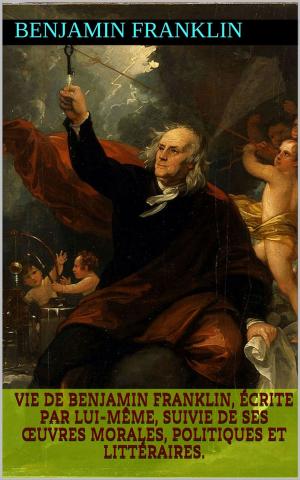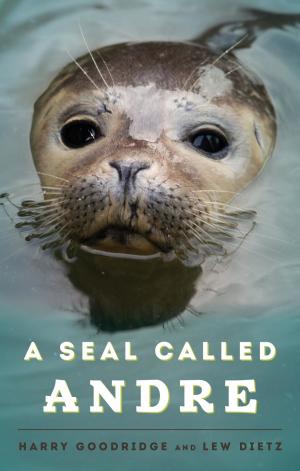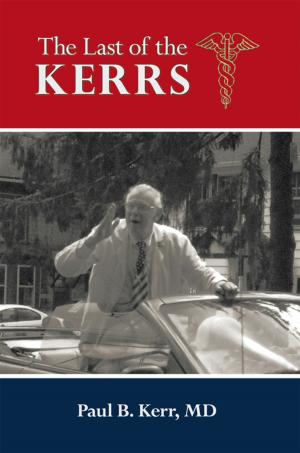Experiments on the Nervous System with Opium and Metalline Substances
Made Chiefly with the view of Determining the Nature and effects of Animal Electricity
Nonfiction, Health & Well Being, Medical, Reference, Test Preparation & Review, Science & Nature, Science, Biological Sciences, Biology, Biography & Memoir| Author: | Alexander Monro | ISBN: | 1230000282763 |
| Publisher: | ADAM NEILL AND COMPANY, FOR BELL & BRADFUTE, AND T. DUNCAN; AND J. JOHNSON, LONDON | Publication: | November 27, 2014 |
| Imprint: | Language: | English |
| Author: | Alexander Monro |
| ISBN: | 1230000282763 |
| Publisher: | ADAM NEILL AND COMPANY, FOR BELL & BRADFUTE, AND T. DUNCAN; AND J. JOHNSON, LONDON |
| Publication: | November 27, 2014 |
| Imprint: | |
| Language: | English |
Example in this ebook
When, in November last, I began to make Experiments on Animal Electricity, of which I read some account to the Royal Society on the 3d of December; I was not only much hurried with business, but could not procure a sufficient number of Frogs for the purpose. During the last winter and spring, I prosecuted the subject more fully and with greater attention; and, on the third day of June, I read a second paper to the Royal Society, to which I have, since that time, made additions. I shall now state a summary of the chief circumstances I have observed, with a few Remarks.
OBSERVATIONS on the CIRCULATING and NERVOUS SYSTEMS of FROGS.
As my Experiments with Opium, as well as those on Animal Electricity, have been performed on Frogs chiefly; I shall premise some observations on their Circulating and Nervous Systems.
Their Heart consists of one Auricle and one Ventricle only, their Aorta supplying their Air Vesicles or Lungs, as well as all their other Organs; and, of course, their Venæ Cavæ return the Blood from all parts to the Heart. The Ventricle of their Heart contracts about sixty times in a minute; and the purple colour of the Blood which is seen within it, disappears after each contraction, or the Blood is entirely expelled by its contraction. For upwards of an hour after cutting out its Heart, a Frog can crawl or jump; and, for upwards of half an hour longer, it contracts its Legs when the Toes are hurt, though not with sufficient force to more its Body from the place where it is laid.
Their Encephalon consists of Brain and Cerebellum, each of which, on its upper part, is divided into two Hemispheres; and, below, they are conjoined by thick Crura, which form the Medulla Oblongata and Spinal Marrow, both of which are proportionally larger than in Man, and more evidently consist of two Cords. There are nine true Vertebræ; and at the sixth of these, the Spinal Marrow terminates in the Cauda Equina. The Sciatic Nerves are formed by three pairs of Nerves, sent out below the seventh, eighth and ninth Vertebræ, and by one pair from the Os Sacrum. A Nerve, resembling our great Sympathetic Nerve, passes downwards from the Abdomen into the Pelvis.
Two days after cutting off the Head of a Frog at its joining with the first Vertebra, I found it sitting with its Legs drawn up, in their usual posture; and when its Toes were hurt, it jumped with very considerable force. Its Heart likewise continued to beat about forty times in a minute, and so strongly as to empty itself and circulate the Blood.
In several Frogs, after cutting off the back part of the six undermost true Vertebræ, I took out all that part of the Spinal Marrow with the Cauda Equina which they cover. The lower Extremities were rendered insensible to common injuries, and lay motionless, yet the Frogs lived several months thereafter, and the wounded parts of their Backs cicatrised; and the Bones of their Legs, which I fractured, were re-united, the Blood circulating freely in their Vessels.
It is universally known, that if, after amputating the Limb of a warm blooded Animal, we repeatedly irritate the Nerves which terminate in Muscles, repeated Convulsions of the Muscles are for some time produced; and that in Frogs, and other cold blooded Animals, the Nerves retain this power still longer.
But it has been commonly supposed, that, after irritating the Nerve a given number of times, the effect ceases, Authors conceiving that there is lodged in the Nerve some fluid, or other energy which is exhausted by repeated explosions. Instead of this, I have found that the time the Nerves preserve their power is the same, whether we irritate them or not; or that their energy is not exhausted by irritation, unless the irritation be such as sensibly alters their texture.
To be continue in this ebook
Example in this ebook
When, in November last, I began to make Experiments on Animal Electricity, of which I read some account to the Royal Society on the 3d of December; I was not only much hurried with business, but could not procure a sufficient number of Frogs for the purpose. During the last winter and spring, I prosecuted the subject more fully and with greater attention; and, on the third day of June, I read a second paper to the Royal Society, to which I have, since that time, made additions. I shall now state a summary of the chief circumstances I have observed, with a few Remarks.
OBSERVATIONS on the CIRCULATING and NERVOUS SYSTEMS of FROGS.
As my Experiments with Opium, as well as those on Animal Electricity, have been performed on Frogs chiefly; I shall premise some observations on their Circulating and Nervous Systems.
Their Heart consists of one Auricle and one Ventricle only, their Aorta supplying their Air Vesicles or Lungs, as well as all their other Organs; and, of course, their Venæ Cavæ return the Blood from all parts to the Heart. The Ventricle of their Heart contracts about sixty times in a minute; and the purple colour of the Blood which is seen within it, disappears after each contraction, or the Blood is entirely expelled by its contraction. For upwards of an hour after cutting out its Heart, a Frog can crawl or jump; and, for upwards of half an hour longer, it contracts its Legs when the Toes are hurt, though not with sufficient force to more its Body from the place where it is laid.
Their Encephalon consists of Brain and Cerebellum, each of which, on its upper part, is divided into two Hemispheres; and, below, they are conjoined by thick Crura, which form the Medulla Oblongata and Spinal Marrow, both of which are proportionally larger than in Man, and more evidently consist of two Cords. There are nine true Vertebræ; and at the sixth of these, the Spinal Marrow terminates in the Cauda Equina. The Sciatic Nerves are formed by three pairs of Nerves, sent out below the seventh, eighth and ninth Vertebræ, and by one pair from the Os Sacrum. A Nerve, resembling our great Sympathetic Nerve, passes downwards from the Abdomen into the Pelvis.
Two days after cutting off the Head of a Frog at its joining with the first Vertebra, I found it sitting with its Legs drawn up, in their usual posture; and when its Toes were hurt, it jumped with very considerable force. Its Heart likewise continued to beat about forty times in a minute, and so strongly as to empty itself and circulate the Blood.
In several Frogs, after cutting off the back part of the six undermost true Vertebræ, I took out all that part of the Spinal Marrow with the Cauda Equina which they cover. The lower Extremities were rendered insensible to common injuries, and lay motionless, yet the Frogs lived several months thereafter, and the wounded parts of their Backs cicatrised; and the Bones of their Legs, which I fractured, were re-united, the Blood circulating freely in their Vessels.
It is universally known, that if, after amputating the Limb of a warm blooded Animal, we repeatedly irritate the Nerves which terminate in Muscles, repeated Convulsions of the Muscles are for some time produced; and that in Frogs, and other cold blooded Animals, the Nerves retain this power still longer.
But it has been commonly supposed, that, after irritating the Nerve a given number of times, the effect ceases, Authors conceiving that there is lodged in the Nerve some fluid, or other energy which is exhausted by repeated explosions. Instead of this, I have found that the time the Nerves preserve their power is the same, whether we irritate them or not; or that their energy is not exhausted by irritation, unless the irritation be such as sensibly alters their texture.
To be continue in this ebook















